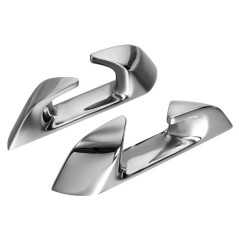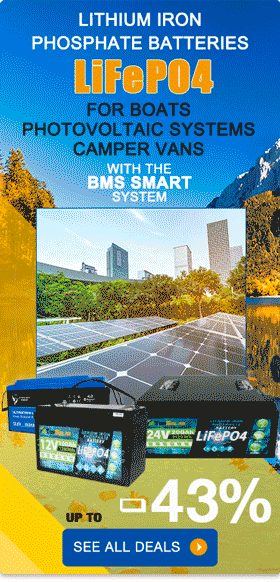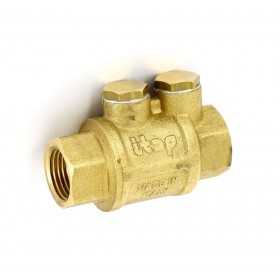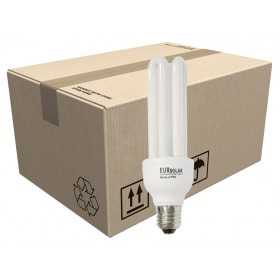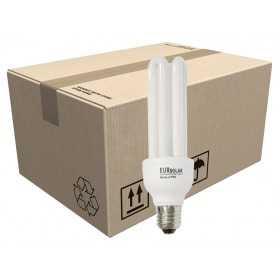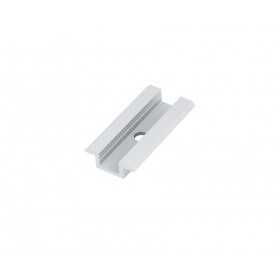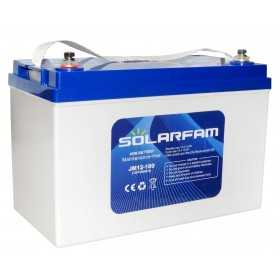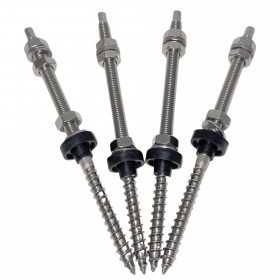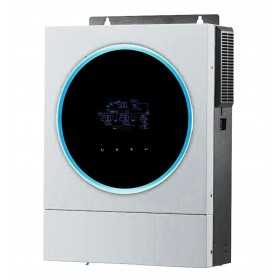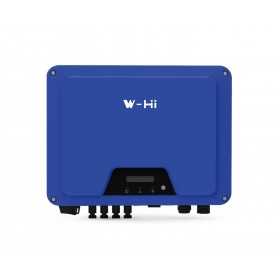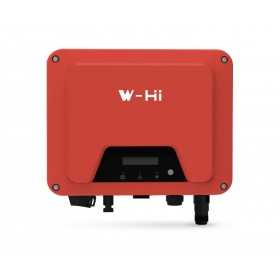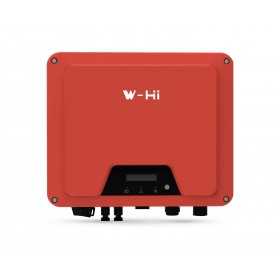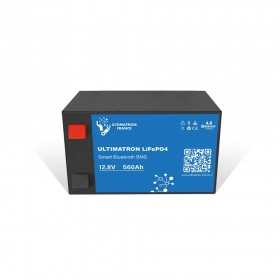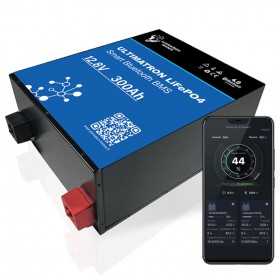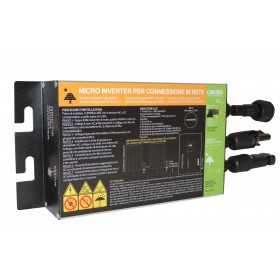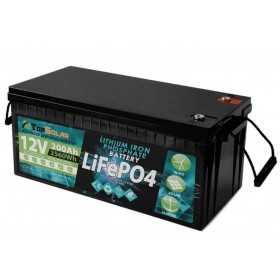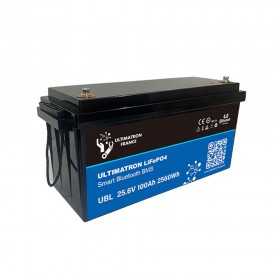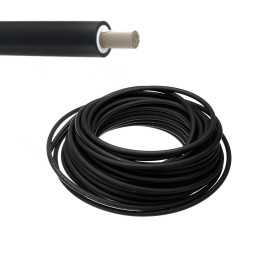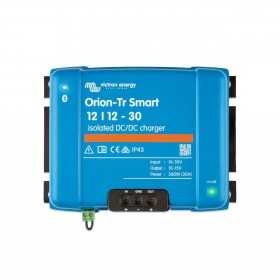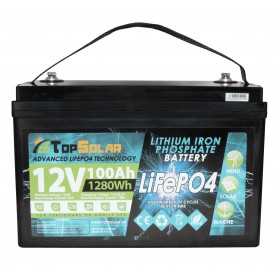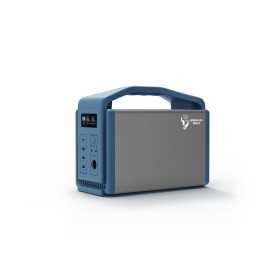
Solar and Wind Energy
Subcategories
Wind generators
The wind generator, in particular, is the heart of the plants that exploit the kinetic energy of the wind to produce electricity. In fact, when the wind speed exceeds 10 km/h, the wind turbines start moving, generating - in turn - a mechanical force which activates the wind generators, which transform this energy into electricity.
Lead Acid Batteries
The lead-acid battery (also known improperly as a lead-acid battery or lead-acid battery) was conceived in 1859 by the French physicist Gaston Planté and is the oldest type of rechargeable battery (or accumulator, by definition), widely used on cars, motorcycles and other motor vehicles mainly to allow the combustion engine to start and power all on-board electrical utilities. Battery manufacturers not only use lead for the plates but add other elements such as antimony and calcium, these elements serve to decrease the most common negative phenomena in batteries such as self-discharge, life in charge / discharge cycles or tendency to sulfation. Its ability to deliver instant high power on ignition makes it quite powerful. This feature, together with its low cost, makes it convenient for use in motor vehicles to power the starter for a few seconds. A cell is conventionally considered discharged when at its ends there is a voltage lower than 1.75 V / cell (10.50 V / batt., At 25 ° C and at least after about 10 min of rest) and fully charged when it is of 2.15 V / cell (12.90 V / batt., at 25 ° C and after 24 hours from the charge). This type of battery, if well treated and maintained, can have a very long life, conversely a lack of maintenance significantly reduces the life of the battery. The most common types of faults to which lead-acid batteries are subject, if they are not well maintained and used within the limits prescribed by the manufacturers, are: internal short circuits, the sulphation of the plates / cells and acid leaks, even if these he last type of damage is a particularly rare event, given the reliability of current plastic casings. The short circuit occurs when two plates of opposite polarity come into contact in an element due to the breakage of the separator by mechanical action (shocks, vibrations) or due to the accumulation of active matter on the bottom of the cell (typically PbO2 in the positive plates) escaped from the alveoli accidentally broken, also due to sulphation or prolonged corrosion of the acid in high concentration. Furthermore, excessive and prolonged charging currents can overheat the plates and even deform them due to thermal expansion in the most serious cases. The sulphation of the plates / cells, on the other hand, is a natural chemical process that occurs whenever a lead acid accumulator is discharged to supply electricity to an external user or is left inactive for a long time, in which case the self-discharge / internal dispersions (always present) reduce the available energy initially present in the accumulator.
LiFePO4 Lithium Batteries for Storage Systems
Lithium iron phosphate batteries.
The lithium iron phosphate (LiFePO4) battery (also called "LFP" for short) is a type of rechargeable battery, specifically a lithium ion battery, which uses lithium iron phosphate as the cathode material.
LiFePO4 batteries are always batteries that use lithium chemistry, therefore they share the same advantages and disadvantages with it. The key advantages of LiFePO4 batteries, compared to LiCoO2, are greater thermal resistance, greater resistance to aging, higher peak current and the use of iron which, unlike cobalt, has a lower environmental impact.
The average life of the LFPs, if used at 90% of the nominal capacity, abundantly exceeds the 2,000-10,000 complete cycles of useful life, even subjected to large loads, giving excellent voltage stability. Compared to other lithium technologies, LFP batteries are subject to a relatively low aging effect even when kept at high temperatures.
The cells are commercially available in different formats which make them particularly suitable for making traction batteries in the most popular sizes of 100 / 200 / 300 / 400 / 500AH.
A photovoltaic accumulator must be reliable for many years, only in this way can it be economically sustainable. Again, battery technology is crucial. Our LiFePO4 batteries are designed for a duration of 2000-10000 cycles depending on the model and use. (Max 80% discharge is recommended). They have no memory effect.
Lead AGM batteries
Lead-acid batteries are the oldest and today the most widespread technology used for energy storage. Used for starting the engines of cars, motorcycles, boats, etc. but also for millions and millions of off-grid and on-grid photovoltaic systems. This type of battery has the enormous advantage of being extremely reliable. AGM technology Inside the AGM batteries there is a valve that automatically renews the energy production without having to fill the battery with the addition of acid.If the abbreviation AGM (Absorbed Glass Mat) is shown on the battery it means that inside there are fiberglass plates that absorb and retain acid. In normal state, lead AGM batteries are equipped with a gas recombination system inside. The valves therefore have the task of releasing gas in the event of an overload. The AGM plates therefore make it possible to reduce the production of gas by transforming it into water and redistributing it in the internal circuit so that it produces current. AGM technology therefore allows to have a hermetic battery without any possible leakage. Should the battery fall, the acid will not leak. AGM batteries also do not require any type of maintenance: unlike lead-acid batteries, they do not require regular additions of electrolyte.
Lead GEL batteries
A modern GEL battery (also known as a "gel cell") is a VRLA battery with gelled electrolyte and AGM (Absorbed Glass Mat) batteries are lead-acid accumulators in which the electrolyte is absorbed in separators consisting of a spongy mass in fiberglass, precisely for this reason the AGM and GEL batteries also have a sealed container and the recombination of gases have the following advantages:
- really maintenance free;
- they are compact and very resistant to mechanical stress (so resistant to be used for military purposes);
- they can be mounted in any position;
- they can be used at high altitudes and at sea;
- they withstand high temperatures better (ideal for uninterruptible power supplies);
- thanks to the division of the glass fiber plates, there is no danger of short circuit between cell and cell;
- they are suitable for starting motors thanks to their high starting currents;
- they have a low non-discharge and a high aperometric yield during charging;
- charging times shorter than lead acid batteries;
- immune from the risk of accidental spillage of liquid acid;
- suitable for installations near people and electronic devices.
What are the differences between GEL batteries and AGM batteries? And for which uses should you choose a GEL or AGM battery? The quality of both is very high: AGM technology is much less delicate and supports a greater number of deep discharge cycles, as AGM technology allows the electrolyte to evaporate during the charging and discharging phase (i.e. when the internal temperature increases), at the end the GAS recombines with the acid keeping the battery efficient. GEL accumulators have a completely gelatinized acid and are less durable over time due to the difference in temperature that is created in the charge / discharge cycles that cause the gel to sulfate, for this reason they are considered more suitable for a buffer use. (e.g. in UPSs), they guarantee a very high life expectancy. In the case of heavy cyclic use (industrial cleaning machines, golf cars and electric vehicles, etc.) it is advisable to turn to cyclic type GEL batteries that allow deeper discharges and a greater number of charge / discharge cycles typical of the intense use.
AGM batteries are suitable for both uses in cyclical use (they support many charge / discharge cycles) and as a buffer use (long-term energy reserve) therefore particularly suitable for:
- pleasure and professional boating
- electric vehicles and machinery
- industrial uses
- UPS and emergency in general
- Solar
Off Grid Photovoltaic
The world of OFF GRID photovoltaics ... from small applications such as boats, camper huts to larger applications. in this section provided everything that falls within the off grid photovoltaic material ... Photovoltaic panels from 5W of power up to over 390W; from the classics with aluminum frame to the most modern and innovative flexible panels. 7 Ampere batteries for small systems up to industrial accumulators of over 6000 Ampere. Voltage regulators with PWM and MPPT technology of the latest technology with very high efficiency DC-AC inverter for simple off grid systems and All-in-One inverters with AC-DC battery charger and solar integrator regulator for more complex and medium-large photovoltaic systems. A wide range of accessories for the building of your photovoltaic system.
Off Grid photovoltaic kits (disconnected from the grid) are necessary where there is no possibility of being able to connect to the electricity grid. There are various applications such as mountain huts, rural areas but also campers, boats etc. These photovoltaic kits are composed of 3 main components, photovoltaic panel, voltage regulator and battery, which are essential to power 12 or 24 volt low voltage users and loads, however with the use of a DC-AC inverter it is also possible to power the common 220V loads.
Today it is possible to size and build large off-grid photovoltaic systems with powers of various Kw in both single-phase and three-phase.
Photovoltaic modules
The wide range of high efficiency mono Full Black photovoltaic modules with multi-busbar technologies and half-cut cells, glass-glass photovoltaic panels, bifacial photovoltaic panels, semi-flexible panels, etc. Most of the panels are directly available from stock.
The latest generation high efficiency photovoltaic solar panels exploit SHINGLED technology.
Shingled technology uses a system of cells that are cut along the main grid into 5 or 6 pieces by laser tracing. The cells are connected together using ECA electroconductive adhesives (as opposed to using solder tape) to form a string of cells. The shingle interconnection offers very high efficiency with better low irradiation performance. Compared to standard panels.
• In the morning and in the evening, photovoltaic panels with Shingled technology still guarantee 87% of energy production, unlike standard modules, where the diodes stop working by deactivating the circuit.
• Shinlged technology allows you to insert a greater number of cells on the photovoltaic module, and consequently almost 100% of the panel surface is covered by solar cells, ensuring greater energy performance and high efficiency.
• Both LID (Light Induced Degradation) and PID (Potential Induced Degradation) are rigorously eliminated to ensure higher effective yield over life.
Installation Accessories
Wide range of accessories for installing photovoltaic panels such as components for fixing systems, photovoltaic cables and connectors, DC/AC panels, stainless steel hardware, battery switches, fuses and fuse holders.
There are 300 products.
Megafix Aluminum central clamp made for fixing panels 36x70mm N52331500070
Megafix Left perforated windproof fairing for fixing panels N52331500062
50pcs Kit Megafix Aluminum Terminal Clamp made for fixing panels 40x70mm N52331500074
Megafix Aluminum Terminal Clamp made for fixing panels 35x70mm N52331500073
100pcs Kit Megafix Aluminum central clamp made for fixing panels 36x70mm N52331500076
50pcs Kit Megafix Aluminum Terminal Clamp made for fixing panels 35x70mm N52331500075
Solar Aluminum Profile M8 40x40mm for slot nut N52331500110
Inox A2 Adjustable Solar hook for roofs 140x56x3mm N52331500080
50pcs Kit Aluminum Slide-in Solar mounting rail connector N52331500121
Aluminum Slide-in Solar mounting rail connector N52331500120
4pcs DIN6923 M10 A2 Hexagon nuts with flange and Serration N44590008505
15pcs DIN9250 M8 A2 Safety washers Type S N44590008205
1000pcs DIN9250 M8 A2 Safety washers Type S N44591K08205
100pcs DIN933 UNI5739 A2 Stainless steel Hexagon screw 10x25 N44591007833
4pcs DIN912 A2 Stainless steel Hexagon socket head cap screws 8x45mm N44590007234
200pcs DIN6923 M10 A2 Hexagon nuts with flange and Serration N44592008505
100pcs DIN912 A2 Stainless steel Hexagon socket head cap screws 8x45mm N44591007234
4pcs DIN933 UNI5739 A2 Stainless steel Hexagon screw 10x25 N44590007833
Rolls S320 4000 Series Battery Bank 24 Volt 7.68 kWhC100 200ROLLSS320-24V
Growatt MIC 2500TL-X Single Phase On-grid Inverter 2.5kW 3500Wp 1 MPPT 13A EU Version
Growatt MIC 3000TL-X Single Phase On-grid Inverter 3kW 4200Wp 1 MPPT 13A EU Version
Growatt MIC 3300TL-X Single Phase On-grid Inverter 3.3kW 4290Wp 1 MPPT 13A EU Version
AGM 12V 100Ah C10 SOLARFAM Battery Solar Wind Photovoltaic Systems N51120050931
TopSolar Set 4pcs M10X200 A2 stainless steel self-tapping screws for PV structures art.9215 N44590005000
TopSolar VM IV 3600VA 3.6kW 230V Off Grid Solar Inverter 24V MPPT 22022020
LOT COMING MAY 10, 2023, BUY NOW LIMITED QUANTITIES AVAILABLE
Western W-HPT-15K 15kW 380/400Vac 2 MPPT 4 Arrays Three-phase Inverter WE017735
Western W-HPT-20K 20kW 380/400Vac 2 MPPT 4 Arrays Three-phase Inverter WE017736
Western W-HPK-3K 3kW 230VAC 1 MPPT Single-phase grid-tied inverter WE017637
Western W-HPS-6K 6kW 230VAC 2 MPPT Single-phase grid-tied inverter WE017767
Ultimatron 12.8V 560Ah 12V LiFePO4 Lithium Battery with BMS Smart Bluetooth ULULM12560
Ultimatron 12.8V 300Ah 12V LiFePO4 Lithium Battery with BMS Smart Bluetooth ULULM12300
24V 3.2kW Photovoltaic Kit with 3.6kW TopSolar Inverter
24V 1.6kW Photovoltaic Kit with 3.6kW Inverter and 3.84Kwh LiFePo4 Batteries
Topsolar GMI500 500W 230Vac Plug & Play grid-tied Micro Inverter N52731053100
Set of 20pcs AISI 304 A2 Adjustable Solar hooks for fixing photovoltaic panels N52331500082
Set of 4pcs AISI 304 A2 Adjustable Solar hooks for fixing photovoltaic panels N52331500081
Set of 4pcs Adapter plates for dowel screws art. 9215-16 M10 N52331500086
Set of 12pcs Adapter plates for dowel screws art. 9215-16 M10 N52331500087
TopSolar LiFePO4 12V 200Ah 12,8V Lithium Battery Built-in Smart BMS N51120050953
Lot delivered 60 days after order, Book now, Limited quantities
Ultimatron LiFePO4 24V 100Ah UBL-24-100-PRO Lithium Battery BMS Smart Bluetooth 2560Wh ULUBL24100
Direct shipping from the Europe Warehouse, delivery in about 10-15 days throughout Europe.
Black Unipolar Photovoltaic Cable 10 sqmm Sold by the meter N50830750294MT
Victron Energy Orion-Tr Smart 12/12V 30A 360W DC-DC Charger Isolated UF23149S
LiFePO4 12V 100Ah Lithium Battery 12,8v 1280Wh TopSolar ITALY Built-in Smart BMS N51120050948
Ultimatron ULT-500 500W 560Wh Portable Power Station LED HD ULULT500
Direct shipping from the Europe Warehouse, delivery in about 10-15 days throughout Europe.




